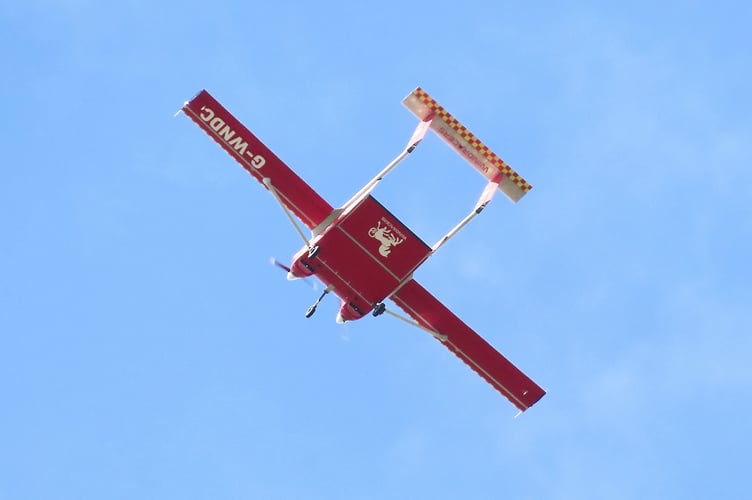FUTURISTIC world-first plans for drones to detect wildfires before they even happen have been unveiled by a British fire service, writes SWNS reporter Izzy Hawksworth.
Lancashire Fire and Rescue Service have tested a swarm of self-coordinating drones at Cornwall’s Predannack airport, as part of an effort to develop cost-effective early mitigation strategies for wildfires.
The gadgets will incorporate thermal and optical imaging to automatically detect and investigate fires and then will relay the information to the fire and rescue service. The drones can then rapidly deploy fire retardant onto the fire, monitor the situation and return to base.
Justin Johnston, from the fire service, said: “The earlier we reach fires, the less harm they pose to firefighters, communities, infrastructure and the environment.
“The self-governing swarm of flying drones could help firefighters detect a wildfire earlier. While being able to locate the exact place of fire and summon other drones to control the fire before firefighters get to the scene.

“We are proud and delighted to be part of this trial, the first of its kind in the world, and have a say in technology that could greatly reduce the risk of wildfires.”
The project has been organised by Windraces, who develop self-flying cargo, and robotic scientists from the University of Bristol and the University of Sheffield.
The week-long trial, which was based at Predannack, tested how well Windrace's ULTRA drones identified a number of small, controlled fires.
The gadgets have previously been used to carry parcels to the Orkney Islands in Scotland and collect scientific data in Antarctica.
Windracer's founder Stephen Wright said: “This successful trial was the culmination of four years of research and development.
“It brought together some of the country’s greatest minds in autonomous aviation, AI and robotics to help tackle one of society’s greatest challenges. We believe this highly cost-effective technology could be a game-changer.”




